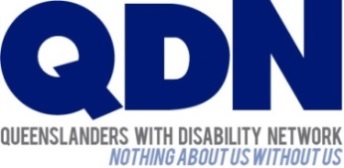The information on this page is also available as a downloadable Quick Guide, by clicking below. There are PDF and word versions.
Group Process
When forming a new peer support network, it is important to create a supportive environment where people feel comfortable to share. Once you have found the right venue (see Factsheet Thinking about venues, accessibility, and communication needs) it is good to think about group process.
There are many ways to create the right environment to help people feel comfortable, and that they are in a place where they feel valued and supported to participate. One of the ways that can work well for this is for people to sit in a circle. Depending on the size of the group, you might like to arrange a table for people to sit around so everyone can look at each other and have something to lean on or hold their drink. Sitting in a circle creates an environment where everyone can see and hear each other as no one is sitting behind anyone else.
Welcome
At the start of each meeting, it is important for the group facilitator to welcome everyone to the meeting and go through any housekeeping. It is also good to think about sharing meeting tasks with other group members. For example, facilitators could ask a different group member to do the acknowledgement of country at each meeting.
Check in
Once everyone has been welcomed, the group facilitator can ask everyone to take turns to introduce themselves and to answer a “check in” question. It is important that everyone knows who is in the room particularly when groups are starting.
Check in questions help group members to get to know each other and build group rapport. The check in shouldn’t take too long but it is important to have a question that helps people engage and that everyone can connect with. There are no right or wrong answers to check in questions and it’s ok if people may not feel comfortable sharing right away. If someone does not feel comfortable, facilitators can come back to them when everyone is finished or they can opt not to participate.
Examples of check in questions:
- What is one thing you would like to know more about from today’s meeting?
- What is one interest of yours that others in this group might not know about?
Group Rules/Guidelines
At the first meeting the group can talk about group guidelines or rules. It is good to decide as a group how the group would like to operate and for members to agree on rules/guidelines. Group rules help group members work together as everyone knows what is expected at meetings. Examples of group rules could be only one person talking at a time or turning off mobile phones before meetings. It is helpful if the group rules are recorded and new members made aware of them when they join the group.
Meeting Discussion
It is good to ensure everyone has an opportunity to have a say and share their stories. To assist group members who may not feel comfortable talking in a group, the facilitator can ask members individually during the meeting if they would like to say anything. This gives everyone the opportunity to have a say.
Groups should consider a planning meeting once a year to discuss what topics the group would like to talk about during the year including possible speakers to invite.
Talking Stone/Object
Talking stones or other objects that are easily handed around and not breakable are a useful tool during meetings. The person who is holding the talking stone is the person who is speaking. Once the person speaking has finished they hand the stone to the next person that would like to talk.
Check out
A good way to end each meeting is by having a check out. The checkout is a way to check how group members are feeling after the meeting. Before the meeting closes the group facilitator asks each member to take turns to answer a check out question.
Example Check Out Questions:
- What is something you will take away from today’s meeting?
- What did you enjoy about today’s meeting?
- What is something you would like to know more about from today’s meeting?
Meeting Close
At the end of the meeting let members know when and where the next meeting will be, how members will be notified of upcoming meetings (Facebook, email, SMS) and how members can contact the Facilitator between meetings.
More information and resources
Group process – http://www.encoreleaders.org/
More information on the Circle Way process can be found at http://www.artofhosting.org/what-is-aoh/methods/
Check in and Check out process http://extraordinarygroups.com/blog/check-ins/
http://toolbox.hyperisland.com/check-in-check-out
Ground rules – http://getthepicture.ca/a-list-of-ground-rules-for-effective-meetings/
Co-authored by Queenslanders with Disability (QDN)

